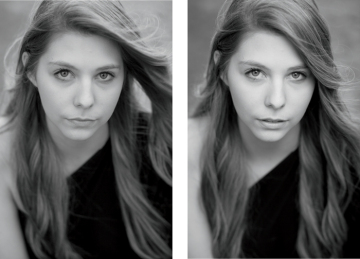Low light blues
Q: MY QUESTION RELATES TO LOW LIGHT PHOTOGRAPHY. I CAN’T SEEM TO GET THE HANG OF IT (THINGS LIKE WEDDING FIRST DANCES, ETC.). TO AVOID THE “DEER IN HEADLIGHTS” LOOK, I DON’T LIKE USING THE FLASH SO I TRY AND USE AS LOW OF AN APERTURE AS I CAN GET (THE LOWEST I CAN GET IS ON MY 50MM) AND A HIGH ISO. THE PICTURES ARE NEVER SHARP. COULD YOU GIVE ME SOME TIPS ON WHAT I SHOULD DO OR WHAT SETTINGS I SHOULD IDEALLY BE USING FOR IT?
A: A lot of times, low light equals bad light. Just because a camera has the capability to shoot in low light doesn’t mean the resulting photo is going to be beautiful. Think full sun at high noon. Easy to shoot in because there is so much light, but is it good light? Not really. Low light, typically, isn’t “beautiful” light. The quality of it isn’t that great. Not all the time, but as in situations you described above, most of the time it sucks.
When you are in low light and you are having issues with sharpness, there are five things at play here. Work on eliminating as many of these issues as you can.
Let’s look at a basic setup at the same exposure value and how all five of these issues can cause problems with getting sharp photos. I’m going to use a hypothetical situation of shooting in low light at ISO 3200 with a 50mm 1.8 lens shooting at f1.8 @ 1/60th of a second.
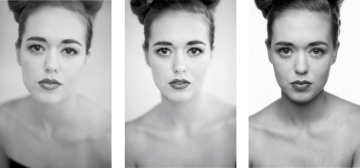
Here are three images shot with a Nikon D3 and an 85mm lens at ISO 800. The first two were shot at f1.8 @ 1/100th in available light. The available light was the modeling lamp from the beauty dish I was using plus window light coming into the studio. It’s fairly nice, soft light.
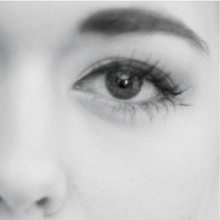
Image #1 shows some motion blur. An 85mm lens at 1/100th of a second can give some blur if you are not rock solid with holding the camera or if your subject moves.
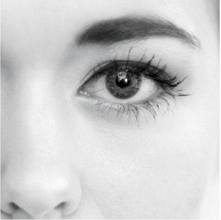
Image #2 shows that it is possible to get a sharp image at these same settings as long as everything and everyone isn’t moving during exposure.
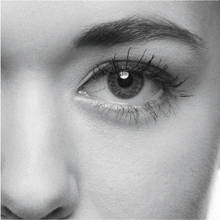
Image #3 was shot at f8 @ 1/250th @ ISO 800. I had my flash power set to the lowest setting on the Alien Bee 1600 that I was using. The image is now much sharper due to two factors: closing the lens down to f8, and using flash. The light being captured now is just from the strobes being used: one strobe as the main and two on the background. At f8 @ 1/250th I’m not registering any ambient light. It’s all from the flash, and the flash duration is very fast so there won’t be any motion blur.
1. SLOW SHUTTER SPEEDS :: As talked about in the last answer, 1/60th is pretty much the bottom edge of shutter speed here. You’ve got to be rock solid in holding that camera if you want sharp images.
2. SUBJECT MOVEMENT :: At 1/60th a moving subject will blur, thus killing sharpness. You can get a sharp shot at 1/60th in this case—if you are standing dead still and your subject is standing dead still. As soon as you introduce a bit of movement on your end and a bit of movement from them, then your photos will not be sharp unless the love of God is with you at that very moment and both you and your subject are moving in the same direction at the same speed. God loves you all the time, but it’s sometimes hard to see at intervals of 1/60th of a second when your images are soft. :)
3. SHOOTING WIDE OPEN :: Lenses are never that sharp at their wide-open aperture. Photo nerds and pixel peepers will point you to resolution charts that show the sharpest point of a lens is somewhere in the middle of its aperture range. But that means shooting the first dance at f8 or so. That’s sort of silly. We’re talking maximum sharpness in a scientific test. Not in real-life situations. The most wide-open aperture isn’t going to be as sharp until you close down just a bit from there. Typically you buy a 1.8 lens because it will start getting sharp at f2 to f2.8. Need to be sharp at f1.8? You buy a 1.2 lens. At that point, though, you’re selling your first-born to buy that lens.
Another thing that kills sharpness when wide open is focusing on subjects further from your lens. If you shoot f1.8 from three feet away it’s going to be pretty sharp. Shoot f1.8 on something, or someone, 15 or more feet away, and it won’t be that sharp. I had a 24–70mm f2.8 zoom that was sharp at f2.8 as long as the subject was within 10 feet of my lens. Any further away than that and I’d have to stop down to f4 to get a decently sharp image.
4. HIGH ISO AND NOISE :: While most cameras today can shoot a pretty decent image at ISO 3200 and up, and while the noise is palatable, it’s still noise and it still kills the fine details in an image. Those fine details make up sharpness. Once you start to “blur” over those fine details with noise, then the sharpness starts to go.
5. QUALITY OF LIGHT :: There is sharpness and then there is “perceived” sharpness. This often comes down to the quality of light falling on your subject. Typically, low light is flat and muddy. There is a lack of good contrast from highlights to shadows. Everything in your frame is covered in this flat muddy light and the details of the image are then...well...flat and muddy. It might be technically “sharp,” but it just looks flat and muddy.
Take the same scene but add a light to add some contrast, and the resulting image will have more contrast and you’ll perceive it to be “sharper” than the image with the flat muddy light because there’s a “snap” to the light. There’s better contrast. Edges are more accurately defined. Details are lit better. The image is “sharper” because the light is “sharper.”
So. Let’s go through this scenario again of using a 50mm lens at f1.8 @ 1/60th of a second at ISO 3200 in low, flat, muddy light. How do we get sharper images in this hypothetical situation?
Faster shutter speed. Jumping from ISO 3200 to ISO 6400 will now give us f1.8 @ 1/125th of a second. Better for handholding but now with more noise, thus still killing fine details. And we’re still in crap light.
Stop down the aperture. Let’s stop down to f2.5 for decent sharpness from this lens. That’s one stop less light. You’ve stopped down your aperture so now you slow the shutter to 1/30th of a second to get the same exposure. Oh wait. We’re going slower with shutter so more motion blur. Okay. Increase ISO one stop to 6400. Oh wait. Adding more noise. Still in crap light. Still at 1/60th of a second.
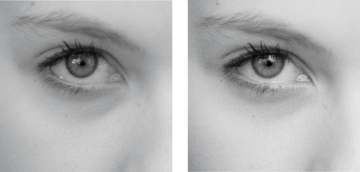
This issue with motion blur isn’t something that just happens at high ISOs. It can happen any time your shutter speed is getting too slow no matter the ISO. These images were both shot on a Canon 5D Mk II / 85mm / f2.8 @ 1/50th @ ISO 100. Image #1 is just available light. Image #2 introduces just a bit of fill flash from a shoot-through umbrella. The fast flash duration combined with adding some contrast to the light in the scene helps achieve a much sharper image.
Decrease ISO. As you lower ISO (to get less detail-killing noise) you need to open your aperture or slow your shutter speed down even more. Well, if you are shooting with a 50mm 1.8 you can’t open any more. Besides, the more open the aperture becomes, the less sharp that lens can be. Slowing your shutter speed down results in motion blur. Still in crap light and now you’re even less sensitive to the crap light. See where I’m going with this?
Ultimately, you’re kind of hosed and you’re making compromises. At some point, ultimate sharpness is thrown out the window because you are at the limits of all of your gear. You can buy better lenses that will be sharper at f1.8. You can buy a better performing camera body that will give less noise at higher ISOs. Let’s say you do this. Better lens. Better camera. Yay! Sharper, to a point, images. But what hasn’t changed at all in this situation?
You are still in crappy, muddy, flat light!!!
So what if you could change the quality of light in this situation? What if that better quality of light happened at 1/1000th of a second? That would stop motion easily, right? What if you could get a nice contrast between highlights and shadows? What if you could shoot the same scene but at ISO 800 at f2.8 and then drag the shutter a bit to pull in some room light?
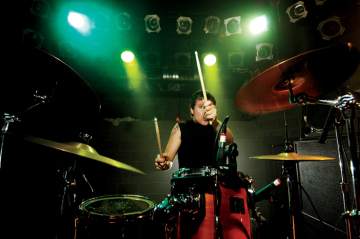
In this shot, there was a Vivitar 285 flash on a stand behind the drummer, Noah Alexander, and I was handholding a Nikon SB24 in my left hand. The Nikon flash was connected to my camera via a Nikon TTL cord, and it was zoomed to 85mm so that it wouldn’t wash the entire scene with light. I just needed some light to hit Noah. This image was shot at f4.5 @ 1/50th @ ISO 200. Dragging the shutter at 1/50th of a second allowed enough ambient light to mix in with the flash so I could avoid that “deer in the headlights” sort of lighting. One interesting additional note here is that I shot this soon after leaving my full time job at Kinko’s. The lens I shot this with, the Nikon flash, and the memory card in the camera were all borrowed from my friend Marc Climie. I didn’t have crap for gear back then.
All of this is possible with...wait for it—flash. The “deer in headlights” look that you hate is because the flash is in the wrong place. You don’t want the flash on your camera. You need it off your camera. Once you introduce better light into this bad low-light situation, then you can lower your ISO and stop down your aperture a bit, and your flash is operating around 1/1000th of a second so action is getting frozen onto your sensor.
Real sharpness and perceived sharpness have all now increased, and you have a better quality of light hitting your subjects. And let me tell you, getting into off-camera lighting can be done for a lot less money than buying 1.2 lenses and top-of-the-line, high-ISO-performing camera bodies. Once you figure out how to effectively mix flash and ambient together, you will avoid the bad light that is currently keeping you from using flash.
#learntolight
I learned a lot about shooting in low light, dealing with ISO noise, and soft images when I started shooting live shows in 2003. I had a Nikon D100 camera that I was not comfortable shooting above ISO 400 because the noise was so bad. I was working with a lot of local bands and shooting shows was my first introduction. Local music venues have horrible lighting, and having a DSLR that couldn’t handle high ISO like the ones we have today made me figure something else out. That something else was using off-camera flashes at shows.
